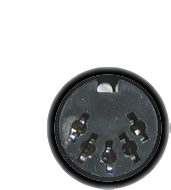MIDIsense is a simple, yet extensible sensor interface system for artists, musicians and others interested in experimenting with sensors. The MIDIsense boards provide a simple way to integrate various common sensors with existing software such as Max/MSP, Ableton Live, etc. or directly to a synthesizer/sequencer with a MIDI in jack. Interface boards are available as kits and (possibly) assembled. Graphical configuration/calibration software is written in wx/Python and wx/C++ and is available for MacOS X or Windows as executable. Linux is not explicitly supported right now.
While there are other projects with similar functionality, this one is the most technically advanced, flexible & inexpensive.
This project is still in "beta" that means that it works well and has been tested but there are still bugs that pop up and the documentation may be incomplete. If you are not comfortable with MIDI this may not be the right kit for you just yet. On the other hand, comments and suggestions to improve the site is very much appreciated and will help get this project to "release" state faster!
This project is supported by EYEBEAM (thanks!) and is distributed under Creative Commons, Attribution/Share alike.
If you have any questions/comments, feel free to ask on the Forum
Instead of having one generic board that handles all kinds of sensors, with extensive configuration required, there are 3-4 different boards. Each board is customized to handle a particular kind of sensor. For example, one board handles 'resistive' type sensors: force, bend, and photosensors all act like variable resistors, and require a certain kind of conditioning circuitry. Another board will handle 'capacitive touch' button sensors: this type of sensor requires a specific chip to function. And so on.
Why am I doing it this way? Well, if there was only one design, the board would be too generic, and the user would have to wire up the custom circuitry required for each kind of switch, which would invalidate the point of having a kit available.
As a result, the artist that intends to use MIDIsense should first decide what sensors are desired (by reading the sensor page), then purchasing & building the correct kits to handle those sensors (as well as the sensors themselves). The sensors have to be wired up but that doesnt require understanding or designing any electronics, usually you only need to solder extension wires in.
Right now only the resistive sensor board has been released, the other boards are designed but haven't been kitted...The others will be ready to go once I've verified that this system works well for people.
